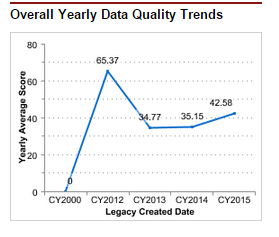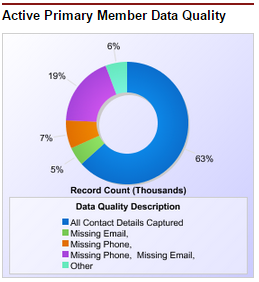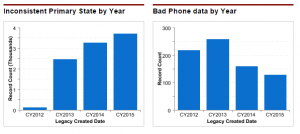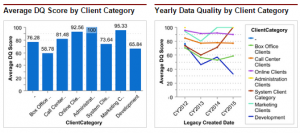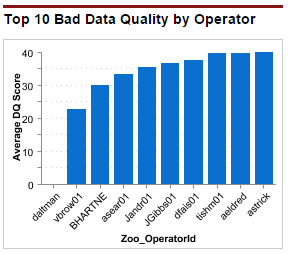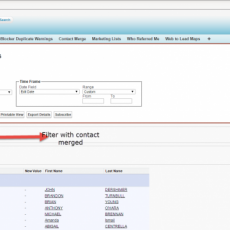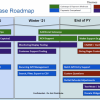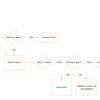If you are a salesforce admin or use salesforce, one of the challenges we face is data quality. Even though it is understood that there is some measure of bad data quality in our org, the question is how much percentage of my data is really bad, what could be the causes and how do we explain to the managemnet on the impact of it? This article would help to answer the above questions and guide you.
1.Create a data quality score.
If you use leads only or leads and contacts, one of the questions you want to ask your business is what is the minimal fields which i would like to have populated on a lead or contact or without what fields would i consider a lead or contact record just garbage? The minimal fields you can use are first name, last name, email or phone and address.
By assigning a score of 20 for each field value present, the data quality score for a lead or contact with all the 5 fields filled in would be 100 and none of it filled in would be 0. The free labs data quality dashboard will do this work for you and you can run a report to view the results. The below is a sample report which would show the result.
2. Measure duplicates based on rigid, semi rigid, loose criteria
The second set of metric you want to measure is the count of duplicates in your org on leads and contacts. This can be done by apps like Demand tools, ring lead or cloudingo easily. But you need to define the duplicate criteria for the leads and contacts. Follow these guidelines to measure duplicates effectively
a. Define a rigid duplicate matching which would closely match the duplicate to a confidence score of 70 to 80% like first name, last name, email or phone and address to measure the duplicates.
b. Define a semi rigid criteria which can measure duplicates to a close score of 50% and the fields you can use are first name, last name and email or first name, last name or phone.
c. Define a loose criteria for measuring the duplicates which can provide a wide range of duplicates and the fields you can use are first name, last name and zipcode as an example.
Using the above criteria’s , you can measure duplicates effectively.
3. Report on inconsistencies.
The third thing you want to measure is on inconsistent data like state fields with abbreviations like Delaware, DE as an example. Creating a simple report which has count of state fields with value more than 2 would help you to report on inconsistent data easily. You can also use phone number fields, country fields and international addresses to report on inconsistent data. Look at a sample report below..
4. Identifying root causes for bad data quality.
Just identifying the data quality metrics alone is not going to be enough to manage data quality. To identify sources , use the following indicators.
1. Systems which created or updated the record
2. Users who created and updated the record.
If you have multiple systems integrated with sfdc like your website, ERP etc, you should create a field on the lead or contact called data source which would have picklist values like web, mobile, system1, system2 etc. Creating a timeline report based on creation date or modified date would help to identify trends on different systems and the decay in data quality.
Similarly creating data quality metrics based on users and segmenting your users on best data quality users whose data quality score is greater than 60 and the least ones would help to identify training needs in your organization. Creating dashboards and motivating users to create better data quality records would help in the long run to improve data quality and adoption. Please look at the below sample report.
Here are the top takeaways for you on data quality.
1. Use labs dataquality dashboard and come up with minimal fields needed to score your lead and contact on data quality.
2. Identify duplicates based on rigid, semi rigid and loose criteria
3. Create reports on inconsistent records and monitor them
4. Identify systems and users who create bad data quality and take action on them.
Using the above techniques, data quality can be managed and maintained in your org. Please feel free to post your comments and email me at buyan@eigenx.com for any questions.
Please subscribe
Subscribe to our mailing list and get tips to maximize salesforce to your email inbox.
I am honored to have your subscription. Stay tuned for tips to maximize your salesforce investment
Something went wrong.
